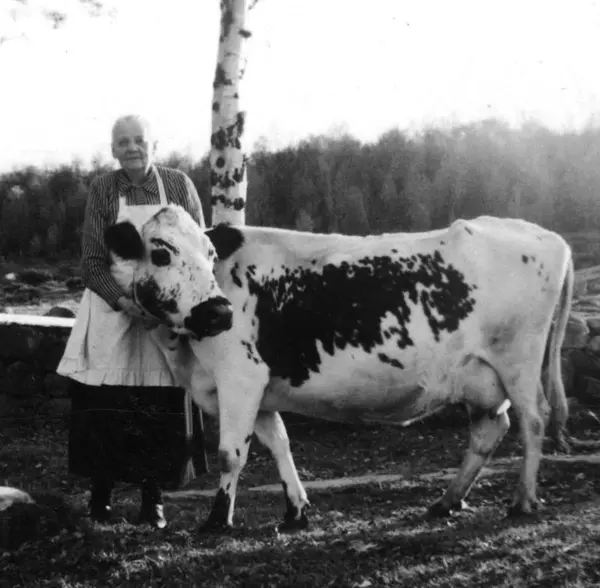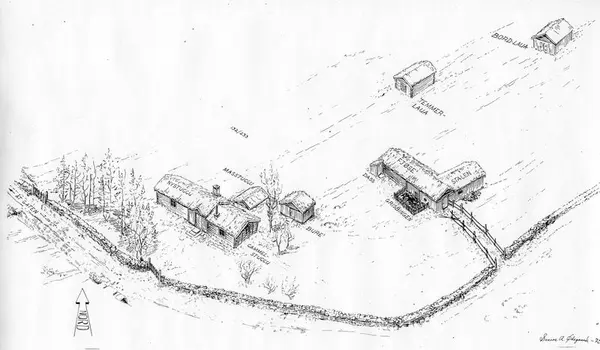-
Oline Wintervold. Rasmusvollen at Stikkjildalen Rørosmuseet
Randi Borgos
They cleared parcels of land, called gardens or allotments where they planted feed for the cattle. At each place they set up a small shed where the feed was stored before they collected it as required during the winter. Each farm had 2 or 3 plots, which they owned and farmed. At the end of the 1800s there were some 700 of these cleared plots around Røros. The landscape resembled a patchwork quilt and the ownership boundaries were complicated. The plots of land varied in size from a half to 4 acres.
-
Rasmusvollen Sverre A. Ødegaard
A farm should also have its own upland property where it was essential to graze the animals during the summer months. The people from Røros cleared all the available land around the hills of the town. The best areas were popular. As long as the people lived in the summer cottages high up on the slopes tending their animals then Røros was their winter dwelling.
Not everyone had a summer or upland farm. Some had to make do with a summer cow shed on the edge of the planted area outside town. Those who looked after the animals went out morning and evening and carried the milk back home.
During recent generations Rasmusgaarden owned three plots of land east of the town at Smaasetren (small summer farm), and another plot to the south-west at Stormoen. The summer farm and dairy belonging to the family was called Rasmusvollen at Stikkjildalen. At Stikkjildalen the pasture was lush for the animals. In all there were 5 summer farms in this upland area. The people from Rasmusgaarden went up to their summer farm each year until 1970 when farming was finally ended.

